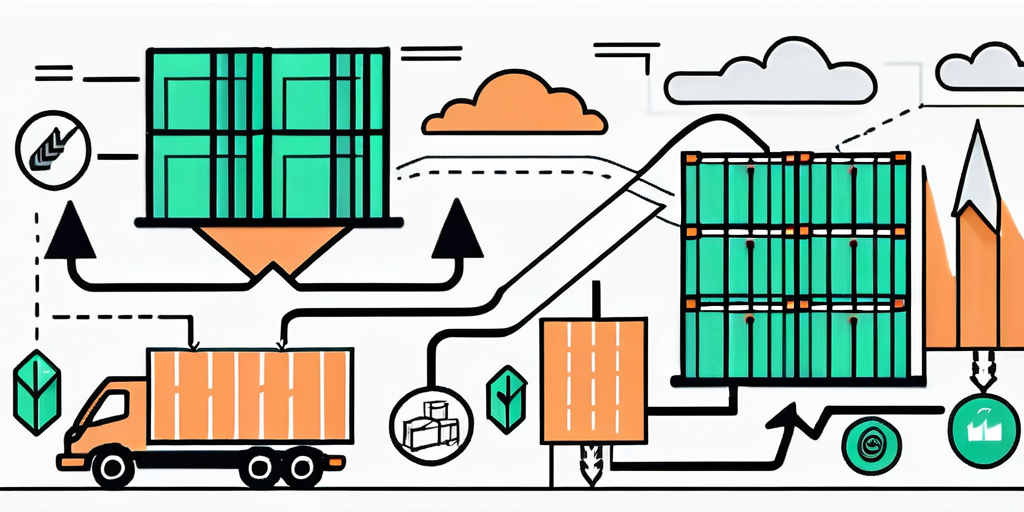Dropshipping is a popular business model in the e-commerce industry that offers entrepreneurs a low-risk way to start their own online store. In a dropshipping business, the store owner doesn’t need to keep any inventory in stock. Instead, when a store owner sells a product using the dropshipping model, they purchase the item from a third-party supplier who then ships it directly to the customer. As a result, the store owner never sees or handles the product.
Understanding the Concept of Dropshipping
Dropshipping is a retail fulfillment method where a store doesn’t keep the products it sells in stock. Instead, when a store owner sells a product, it purchases the item from a third-party supplier who then ships it directly to the customer. This means that the store owner doesn’t have to worry about inventory, storage, or fulfillment.

Definition and Overview of Dropshipping
Dropshipping is a business model where an online store doesn’t keep the products it sells in stock. Instead, it purchases the products from a third-party supplier and has them shipped directly to the customer. This business model is popular among entrepreneurs as it eliminates the need for upfront inventory investment and provides flexibility in terms of product selection and fulfillment.
The Role of Dropshipping in E-commerce
Dropshipping plays a vital role in the e-commerce industry. It has revolutionized the way entrepreneurs start and operate their online businesses. With dropshipping, entrepreneurs can launch an online store without the need for a physical store or a warehouse. This low-risk and flexible business model has empowered many aspiring entrepreneurs to turn their ideas into profitable online businesses.
One of the key advantages of dropshipping is the wide range of products that entrepreneurs can offer to their customers. Since they don’t need to invest in inventory upfront, they can easily test different product categories and see what resonates with their target audience. This allows them to constantly adapt and refine their product offerings, ensuring that they stay relevant in a fast-paced market.
Moreover, dropshipping enables entrepreneurs to tap into global markets without the need for complex logistics. With the ability to source products from suppliers all around the world, online store owners can cater to customers from different countries and expand their customer base exponentially. This opens up a world of opportunities for entrepreneurs to explore new markets and reach customers they wouldn’t have been able to reach otherwise.
The Mechanics of a Dropshipping Business
In a dropshipping business, there are three key players involved: the store owner, the customer, and the supplier. Understanding how these players interact and the process of a dropshipping transaction is crucial for running a successful dropshipping business.

How Dropshipping Works
When a customer places an order on a dropshipping store, the store owner receives the order and payment information. The store owner then forwards the order details to the supplier, along with the payment for the product. The supplier packages and ships the product directly to the customer. The store owner never sees or handles the product, making dropshipping a hassle-free business model.
Key Players in a Dropshipping Model
There are three main players involved in a dropshipping model: the store owner, the customer, and the supplier. The store owner is responsible for creating and managing the online store, marketing the products, and handling customer inquiries. The customer is the individual purchasing the product from the store. The supplier is the party responsible for manufacturing, packaging, and shipping the products to the customer.
Let’s take a closer look at the role of each player in the dropshipping process. The store owner, also known as the dropshipper, is the entrepreneur who sets up an online store and curates a selection of products to sell. They invest time and effort into creating an attractive and user-friendly website, optimizing it for search engines, and implementing effective marketing strategies to attract customers.
The customer, on the other hand, plays a crucial role in the success of a dropshipping business. They browse through the dropshipper’s online store, looking for products that meet their needs and preferences. When they find a product they like, they place an order and provide their payment information. The customer expects a seamless and reliable shopping experience, from the moment they enter the website until they receive their purchased item.
Finally, we have the supplier, who is responsible for manufacturing, packaging, and shipping the products directly to the customer. The supplier is a vital link in the dropshipping chain, as they ensure that the customer receives the product in a timely manner and in good condition. They must maintain high-quality standards and efficient shipping processes to meet the expectations of both the dropshipper and the customer.
By understanding the roles and responsibilities of each player in the dropshipping model, the store owner can effectively manage their business and provide a seamless experience for the customer. Building strong relationships with reliable suppliers and continuously improving the online store’s performance are key factors in achieving long-term success in the dropshipping industry.
Advantages of Running a Dropshipping Business
Running a dropshipping business comes with several advantages that make it an attractive option for entrepreneurs.
Low Startup Costs
One of the main advantages of dropshipping is the low startup costs. Since you don’t need to invest in inventory upfront, you can start a dropshipping business with minimal financial risk. This allows entrepreneurs with limited budget to enter the e-commerce industry and test different product ideas without the need for significant capital.
Flexibility and Scalability
Dropshipping offers entrepreneurs the flexibility to run their businesses from anywhere in the world. As long as you have an internet connection, you can manage your dropshipping store and fulfill orders. Additionally, dropshipping allows for easy scalability. You can quickly add new products to your store and scale your business as demand increases, without having to worry about production or inventory constraints.
But the advantages of running a dropshipping business don’t stop there. Let’s delve into a few more reasons why this business model is gaining popularity among aspiring entrepreneurs.
One significant advantage is the wide range of products available for dropshipping. With dropshipping, you have access to an extensive network of suppliers and manufacturers, offering a diverse range of products. This means you can curate a unique and varied product catalog for your online store, catering to different customer preferences and market trends.
Moreover, dropshipping allows you to focus on what you do best – marketing and customer acquisition. Since you don’t have to worry about inventory management and order fulfillment, you can invest more time and resources into building your brand, creating compelling marketing campaigns, and providing exceptional customer service. This strategic focus can lead to higher customer satisfaction and increased sales, ultimately driving the growth of your dropshipping business.
Additionally, dropshipping provides the opportunity to test new product ideas and market trends with minimal risk. You can quickly introduce new products to your store and gauge customer interest without the need for large upfront investments. This agility allows you to adapt to changing market dynamics and stay ahead of the competition.
In conclusion, the advantages of running a dropshipping business extend beyond low startup costs and flexibility. The wide range of products available, the ability to focus on marketing and customer acquisition, and the opportunity for agile experimentation make dropshipping an enticing option for entrepreneurs looking to enter the e-commerce industry.
Challenges in Dropshipping Business
While dropshipping comes with numerous benefits, it’s not without its challenges. Being aware of these challenges can help entrepreneurs navigate the dropshipping landscape more effectively.

Supplier Issues and Risks
One of the main challenges in dropshipping is finding reliable suppliers. Not all suppliers are created equal, and it’s important to partner with suppliers who are trustworthy and dependable. Additionally, there are risks associated with relying on third-party suppliers, such as product quality issues, shipping delays, or difficulties in communication. Mitigating these risks through thorough research and diligent supplier selection is key.
Customer Service Challenges
As a dropshipping store owner, you may encounter customer service challenges. Since you’re not in direct control of the fulfillment process, it’s essential to set clear expectations with customers regarding shipping times, product availability, and returns. Handling customer inquiries and resolving issues promptly and professionally is crucial for maintaining customer satisfaction and building a positive reputation for your store.
Steps to Start a Dropshipping Business
Identifying a Niche
The first step in starting a dropshipping business is identifying a profitable niche. Choosing a niche allows you to specialize in a specific product category or market segment, making it easier to target your audience and stand out from the competition. Researching market trends, analyzing customer demand, and evaluating competition can help you identify a profitable niche for your dropshipping store.
Finding Reliable Suppliers
Once you’ve identified your niche, the next step is finding reliable suppliers. Reliable suppliers are crucial for ensuring the quality of the products you sell and for delivering them to your customers in a timely manner. Researching suppliers, reading reviews, and even reaching out to them directly can help you assess their reliability and establish successful partnerships.
Building an E-commerce Website
With your niche and suppliers in place, it’s time to build your e-commerce website. Your website should be visually appealing, user-friendly, and optimized for conversions. It should showcase your products, provide detailed product descriptions, and offer a seamless and secure checkout process. Building a professional website that reflects your brand and appeals to your target audience is essential for the success of your dropshipping business.
In conclusion, dropshipping is a business model that offers entrepreneurs a low-risk way to start their own online store. Understanding the concept, mechanics, advantages, and challenges of dropshipping is crucial for running a successful dropshipping business. By following the steps of identifying a niche, finding reliable suppliers, and building an e-commerce website, entrepreneurs can enter the world of dropshipping and pave their path to success.
